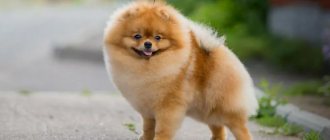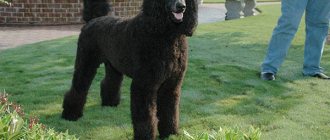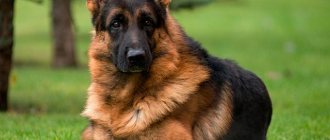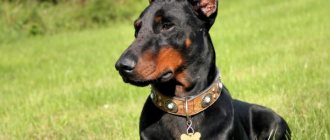How long beagles live - hound dogs with a keen sense of smell - is influenced primarily by the characteristics of the breed, its corresponding characteristics and, of course, the conditions in which the pet is kept.
The name of the breed speaks for itself, beagle, translated from French - gorloder indicates the dog’s ability to emit a long and loud bark and notify the owner about the hunted game. The lifespan of these dogs of English origin varies between 10-15 years, for a small hunting dog this is a long time.
Interesting! Beagles, avid hunters of rabbits and hares, are popular with customs services due to their sense of smell and easily cope with their duties, for example, in terms of detecting explosives.
Factors influencing a dog's life
Beagles are pets, so they are kept in apartments or private homes. Due to their small size and lack of undercoat, dogs cannot be tucked into sleds or kept in outdoor enclosures.
The dog should be walked at least 2 times a day. Moderate physical activity is important to them. The duration of the morning walk is about an hour. Beagles do not pose a danger to others, so you can walk with them without a muzzle and with a long leash.
It is important to feed your dog properly. Food should be rich in proteins, carbohydrates, vitamins and beneficial microelements.
These include:
- Lean meat and boneless fish;
- Canned meat and fish;
- Dietary soups and cereals;
- Boiled eggs;
- Boiled potatoes;
- Dairy products;
- Vegetable stew;
- Fruits;
- Dog food.
Adult beagles eat in the morning and late afternoon. Puppies of the breed must eat at least 4 times, depending on their age. Adult dogs can weigh up to 15 kg.
Beagles often suffer from acquired and hereditary diseases.
This breed is susceptible to:
- Heart diseases, which are manifested by disturbances in the functioning of the valve apparatus, coronary heart disease and coronary circulatory disorders.
- Oncological neoplasms. As dogs age, atypia of cellular structures occurs, which over time leads to the development of formations of benign or malignant etiology.
- Pathologies of the musculoskeletal system. Joint dysplasia is a common disease in dogs with short legs.
- Diseases of the endocrine glands. Beagles are often susceptible to diseases of the pancreas, thyroid gland, and adrenal cortex.
Dogs are bathed several times a month. The coat should be brushed 3-4 times a week with rubber gloves or a brush. To prevent diseases, it is worth examining your pet for defects or pathologies and monitoring its health.
Beagles are trained in canine centers where they are provided with the necessary conditions. They can be taught basic commands at home.
Dogs of this breed are excellent human friends. They quickly adapt to people and do not experience aggression towards other animals. The pet requires constant care. If all rules of keeping in a home environment are followed, a beagle can live more than 15 years.
Breed standard
Such superficial standards do not allow one to fully appreciate the hunting merits of the beagle.
For this, there are additional parameters to distinguish a high-class dog from an average one :
- The bones of the muzzle should be strictly parallel.
- The ears should reach the tip of the nose and be neither longer nor shorter.
- The neck is powerful, the loin is short.
- For the correct positioning of the heart and lungs, the chest must be wide enough.
- The body is long, the legs are not short, otherwise the dog looks like representatives of other breeds.
- The Beagle is an athlete and should not look overweight or fragile.
- The tail should be long and not curl.
- The back part should have developed muscles.
The presence of such parameters makes it possible to tirelessly run long distances, follow the trail and not get lost from sight, that is, exactly match the breed.
Causes of premature death of a dog
Accidents, poisoning, and existing pathologies of internal organs lead to the sudden death of animals. Negative consequences are difficult to predict, however, it is preferable to know what potential dangers threaten your pet.
Common causes of premature canine death:
- poisoning;
- heart disease;
- pneumothorax;
- tracheal collapse;
- congenital abnormalities;
- expansion, volvulus of the stomach;
- ulcer;
- splenic tumor rupture;
- foreign body entering the throat;
- heatstroke;
- injury.
Dogs often suffer from poisons intended for rodents, poisons distributed to exterminate stray dogs. During a walk, be sure to keep an eye on your pet; if the dog does not respond to the command “ugh,” put on a closed muzzle so that the dog does not try questionable “food.”
Heart diseases can manifest asymptomatically, but if a young dog gets tired quickly, is weak, or is breathing heavily, you need to visit a veterinarian for a diagnostic examination.
Air accumulation in the peripulmonary space (pneumothorax) occurs due to injuries to the sternum leading to damage to the emphysematous bladder or existing tumor on the lung.
Tracheal collapse is more common in small breeds, is expressed by a sharp cough after active mobility or the manifestation of strong emotions, and sometimes occurs as a complication of past infections.
A congenital pathology that leads to tragic consequences is the displacement of the cervical vertebrae as a result of insufficient development or defect of the ligaments. An accidental jolt to the problem area can cause pressure on the spinal cord and be fatal.
Gastric dilatation and volvulus are more common in older dogs; both pathologies interfere with the normal blood supply to other organs and are considered deadly. Prevention of stomach problems is considered to be proper nutrition, adherence to a feeding regime and moderate exercise.
The premature death of the animal is caused by complications of peptic ulcer disease, expressed in the formation of a through hole in the wall of the stomach or bleeding. A precaution is the proper nutrition of your pet.
New growths on the spleen (benign and malignant) are susceptible to rupture, which can lead to fatal loss of blood. Tumor rupture is possible even with minor damage caused by difficult bowel movements or increased physical activity.
Swallowing a foreign object risks suffocation or injury to internal organs as the swallowed object moves inside.
Heatstroke is caused by severe overheating of the body and often occurs in dogs locked in a car in hot weather.
A dog can be injured on the street (being hit by a car, fighting with other dogs, etc.), at home (falling from a height, electric shock, etc.), the danger of injury depends on the degree of its severity and the provision of first aid.
Where do “legs grow” from?
The Beagle is a small dog with English roots, classified as a hound. Very active, cheerful, with an inexhaustible flow of energy. The breed was originally bred to hunt hares. Currently, he is an excellent guard for a house or apartment (as he has a ringing and shrill voice), as well as a faithful companion and assistant to his owner.
Being a hunting dog, the animal has a high level of immunity. this breed also has the peculiarities of care and maintenance, which form the answer to the question “ How long do beagles live
Caring for an older dog
At home, an elderly pet should be provided with:
- balanced food, following the feeding regimen;
- monitoring the animal’s body weight and well-being;
- maintaining hygiene (grooming, cleaning the mouth, eyes, ears, trimming nails);
- prevention against parasites;
- moderate physical activity.
Regular preventive examinations of the dog at the veterinarian will help identify diseases and age-related changes in the body, promptly take appropriate measures to treat emerging diseases and alleviate the pet’s condition.
Famous owners
Beagles were very loved by aristocrats and crowned heads. Elizabeth I and William III chose representatives of this breed for hunting, and George IV is even depicted on many canvases with his lop-eared pets.
It is known that American President Lyndon Johnson had two beagles. A very famous photograph is where the politician holds one of his favorites by the ears in a suspended state. After the publication of this photo, a terrible scandal erupted - the president was accused of disliking animals.
Factors influencing lifespan
The life expectancy of dogs is influenced by factors:
- Physical development;
- Does the animal perform loads appropriate for its age and breed;
- Complete rest;
- A balanced diet enriched with nutrients;
- Sufficient communication and attention.
All these quality indicators of life depend 100% on the owner. The way he takes care of his pet shapes the animal’s resistance to stress and various diseases.
A balanced diet from birth lays the foundation for the pet’s physical health for the rest of its life and even into old age. An older dog should be fed soft food to avoid problems with teeth and swallowing.
In old age, animals can suffer from various diseases, most often deteriorating hearing, vision, and disruptions in the urinary system.
Another problem that can significantly reduce the age of any animal is excess weight. Its excess has a bad effect on the pet’s health, affecting the cardiovascular system and bone structure. It is necessary to control the weight of the animal, especially in old age.
Regular medical examinations, vaccinations, timely contacting a veterinary clinic in case of problems - this is what will keep your pet in the right shape. Constantly caring for your pet throughout its life can significantly increase its cycle.
Puppy weight and size by month from 1 to 12 months
During the first year of life, a beagle puppy should acquire the weight and proportions of an adult dog; a girl's developmental indicators will be slightly lower. The difference in weight by gender begins to be determined at one and a half to two months. By this time, the puppies are a small copy of their parents.
In the period from three to six months, the weight of the cubs doubles and the chest and paws intensively develop.
In the period from six to twelve months, the puppy turns into a full-fledged representative of its breed.
The table shows approximate indicators of weight gain and height during the first year of life.
Since each individual is individual, slight discrepancies in numbers are possible.
| Age | Weight | Height | ||
| Male | Bitch | Male | Bitch | |
| At birth | 300 g | 450 g | — | — |
| 1 month | 1.5 kg | 2 kg | 18 cm | 20 cm |
| 2 months | 3-4 kg | 3-4 kg | 22 cm | 25 cm |
| 3 months | 5 kg | 6 kg | 28 cm | 30 cm |
| 4 months | 6-7 kg | 7-8 kg | 30 cm | 32 cm |
| 5 months | 7-8 kg | 8-10 kg | 32 cm | 34 cm |
| 6 months | 8-9 kg | 10-12 kg | 33 cm | 35 cm |
| 7 months | 9-10 kg | 12-13 kg | 35 cm | 37 cm |
| 8 months | 9.5-10.5 kg | 13-14 kg | 35.4 cm | 37.3 cm |
| 9 months | 10.8 kg | 14-15 kg | 35.6 cm | 37.5 cm |
| 10 months | 11-12 kg | 15-16 kg | 36 cm | 38 cm |
| 11 months | 12-13 kg | 16-17 kg | 37 cm | 39 cm |
| 12 months | 13-14 kg | 17-18 kg | 38 cm | 40 cm |
How long do purebred animals live?
According to veterinary experts, there is a clear relationship between the breed and the years measured to the animal. It has been scientifically proven that the smaller the dog, the longer its life.
The vitality of representatives of different breeds varies. This is due to human breeding activities. When developing standards, dogs develop and reinforce features that are often unnatural.
Breeding a breed is fraught with complications, which are expressed in hereditary diseases:
- Chihuahua. These cute little creatures are genetically prone to medial dislocations of the kneecaps, elbow joints, and various dysplasias.
- Dachshund. Natural hunters, with a funny long body on short legs, pay with health for such a body structure. Hereditary pathology in dachshunds is intervertebral disc disease.
- Shar-Pei. Not only in this breed of dog, but in all pets with skin folds, the disease entropion, which is essentially an entropion of the eyelid, is common.
- Rottweilers. Strong, brave, fearless, smart. But they are also susceptible to hereditary diseases - aortic stenosis, Rottweiler leukoencephalopathy, follicular lipidosis.
- Pikines. This ancient breed is distinguished by a special eye structure, for which it suffers from a tendency to eversion of the eyelids, cataracts, and corneal ulcers.
Each breed has its own Achilles heel - dogs with flat faces have problems with the respiratory system, with skin without fur - they suffer from allergies, large pets are often diagnosed with diseases of the joints and bones.
Breeders allow for different situations that affect the life expectancy of dogs:
- Inbreeding;
- Exclusion of the factor of natural selection;
- The appearance of the offspring becomes a priority, not health;
- The lifespan of the progenitors of the offspring is not taken into account.
Dogs of breeds that are less susceptible to selection changes, of medium size, without any special appearance, live the longest. These are terriers, shepherds, huskies.
The presence of long-livers in the family is of great importance. If the pet's parents lived to a ripe old age, then it has every chance of a long life. If we talk about numbers, on average, dogs live about 12 years.
Adult beagle sizes for boys and girls
A moving beagle gives the impression of a swimming dog due to its proportional build: level back, good chest and correct angles of the hind legs.
Back in 1988, the English Beagle Club approved the standards for this breed. The standards for purebred dogs were determined: weight, height, proportions, color.
According to the breed standard , the height at the withers of a beagle should be: for a male - 36-41 cm, for a female - 33-38 cm .
The body length is average, in males it reaches 45-47 cm, in females - 41-43 cm.
The sternum is wide, reaching an average girth of 62 cm in males and 60 cm in females.
Expert opinion
Kozhevin Semyon Kirillovich
Expert dog handler.
With the help of selection, two subspecies of Beagle hounds have been bred - American and English, where the first has greater muscle mass, weighs about eighteen kilograms, height at the withers - 42-43 cm, is longer by two to three centimeters, sometimes the body grows up to fifty centimeters. The skull is angular. The second one is inferior to the American by an order of magnitude and looks miniature.
How to feed?
Beagles are unpretentious eaters and are not prone to allergic reactions, so in most cases they do not require special hypoallergenic food. However, you should still approach their feeding responsibly.
With natural feeding, 70% of the diet should be meat, the remaining 30% should be cereals and vegetables.
This type of nutrition should consist of:
- lean meats;
- sea fish;
- fermented milk products;
- porridge;
- vegetables and fruits.
You can't feed beagles:
- potatoes;
- legumes;
- fatty meat;
- offal;
- bones;
- pickles, smoked meats, sweets.
As treats, it is allowed to give nuts, crackers, baby cookies, and cheese.
IMPORTANT!
The natural type of nutrition must be supplemented with a vitamin and mineral complex.
When feeding ready-made dry food, you should choose premium, super-premium or holistic food.
The most popular brands of feed:
- Bosch;
- Orijen;
- Probalance;
- Eukanuba.
Mixed feeding is also acceptable, the basis of which should be high-quality dry food, and natural products - meat, vegetables, offal and fermented milk products - can be used as additives.
Beagles do not know moderation in food and are prone to obesity, so it is necessary to control the portion size and frequency of feeding.
Popular nicknames
The name for the dog should be simple, short and sonorous. You can name your pet after stars and constellations, musical instruments, geographical features, cartoon characters, etc. – the choice is limited only by the owner’s imagination.
Most popular nicknames:
- for boys - Buddy, Jake, Rocky, Ben, Bim, Jim, Khan, Absinthe, Boston, Best, Juice, Zorro, Frost, Genre, Ilton, Clyde, Lux, Marcel, Nero;
- for girls - Matty, Daisy, Bella, Roxy, Rosie, Luna, Naida, Gerda, Lada, Lucky, Astra, Delta, Daphne, Iris, League, Nika, Thais, Fanny, Chara, Esti.
Choosing a puppy
When planning to choose a hound puppy, it is very important to know the purpose of purchasing such a pet. Before purchasing, be sure to study special literature about the breed and find out its characteristics.
Basic criteria for assessing a puppy:
- body type;
- posture of limbs;
- color;
- wool quality;
- bite;
- behavior.
The best age for a puppy to move to a new home is 2.5-3 months.
Three month old beagle puppies
Where to buy and how much does it cost?
It is recommended to purchase Beagle puppies from specialized nurseries.
The cost of a puppy is determined by a number of criteria and is:
- average price – 20,000 rubles;
- a dog without a pedigree and without prospects for participation in exhibitions or shows can be bought for 10,000-15,000 rubles;
- Show-class beagles will cost at least 30,000 rubles.
The maximum price depends on the prestige of the club, the fame of the breeder or the value of the sires.
What to look for when choosing?
If you buy a dog from a kennel, it must have:
- brand;
- puppy card with the entered data of the parents and kennel;
- veterinary passport: notes on vaccinations, treatments against parasites.
In this case, the puppy should not be lethargic or inactive. The little beagle has well-developed muscles and limbs, so weakness or, for example, lameness should alert the future owner.
Health, illness
Beagles are hardy dogs with good health, but they are not immune to illness. The most common diseases:
- Hip dysplasia.
- Achondroplasia.
- Dermatitis.
- Allergy.
- Epilepsy.
- Diabetes.
- Hepatitis.
- Glaucoma, cataracts, iris dysplasia.
- Ear infections.
In case of any ailment or manifestation of symptoms of any disease, the dog must be shown to a veterinarian.
To detect the disease in the early stages of development, take your pet to the veterinarian for preventive examinations twice a year.
Regularly deworm your pet and treat it for external parasites.
When changing teeth, give your dog toys that he can chew on.
Owner reviews
As a child, I watched the movie “Cats vs. Dogs” and simply fell in love with the Beagle breed. However, my parents did not allow me to have a dog, since there was already a cat in the house. Having moved to my own home, I immediately bought a beagle puppy. He was charming. But it wasn't without problems. At one time he constantly attacked my legs and bit me until I bruised. I don’t know what caused such aggression. But over time it passed.
Barnik taught me not to leave my things on the floor. All found “treasures” immediately turned into trash. This gave me a lot of discipline. Advice to everyone who wants to become beagle owners - think and read 100 times about the breed and walk your pet as often as possible. Then he will have no energy left to damage property.
We got our beagle almost by accident. We were preparing for the arrival of a hunting dog in the family, but we thought that we would take a puppy, but one day we saw an advertisement for the sale of an adult dog. The previous owners abandoned Chuck because... The kid has allergies, but I think they just couldn't handle Chuck. He had health problems - obesity, but this went away because we walked him a lot and fed him high-quality food. This dog is incredibly friendly and energetic. In general, beagles do a lot of mischief in the house, but our only damage was to the front door. When we go to work, we barricade it as best we can. Our Chuck always accompanies us, looking out the window. And he also greets me from work. On the street I keep him on a leash, as this sniffer can get carried away and go very far.
Color variations
In accordance with the standard, the coat color of beagles can be three or two colors.
Tricolor is the most common color option, combining black, white and red.
This color has several variations:
- shiny – with a predominance of white color;
- black – when the hair on the dog’s back is black;
- motley - an arrangement of black and red spots on a white background.
Bicolor is a color that combines white and various shades of red.
IMPORTANT!
With any color option, the tip of the tail should be white.
Also, the breed standard allows for a solid white coat of beagles, without specks or spots, but such representatives of the breed are extremely rare.
Black and white beagles are occasionally found, but this color is unacceptable according to the standard.











